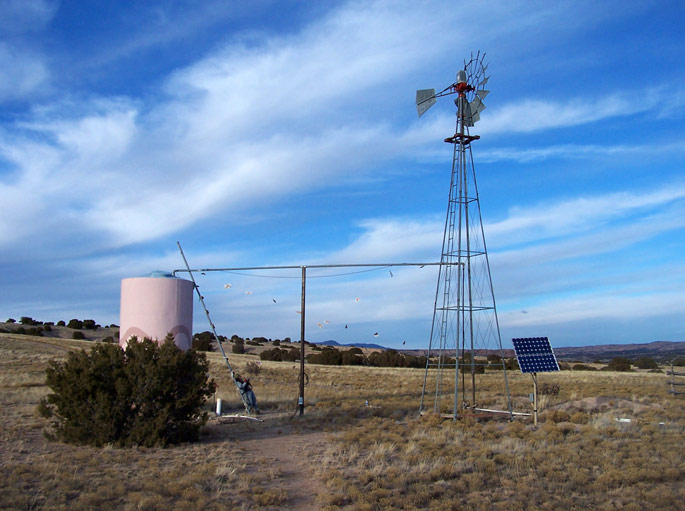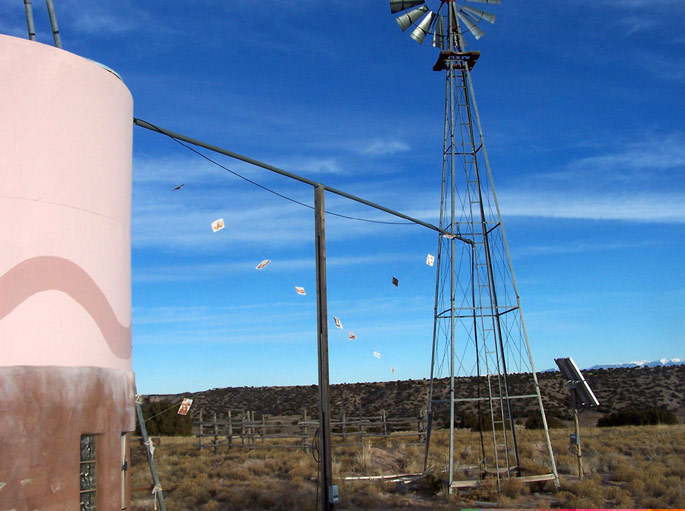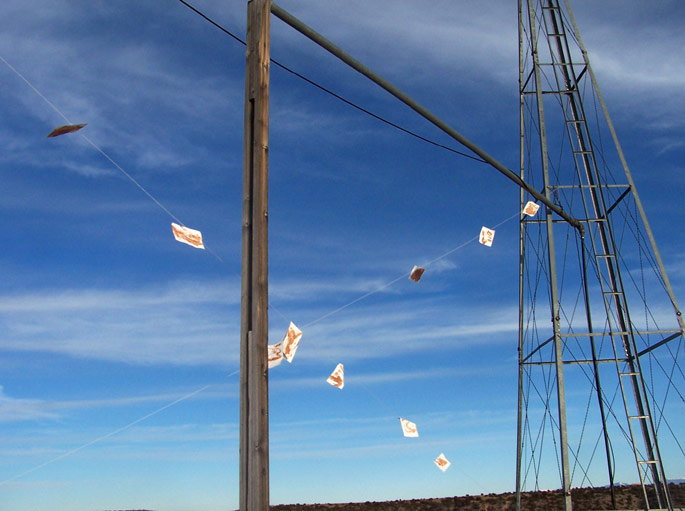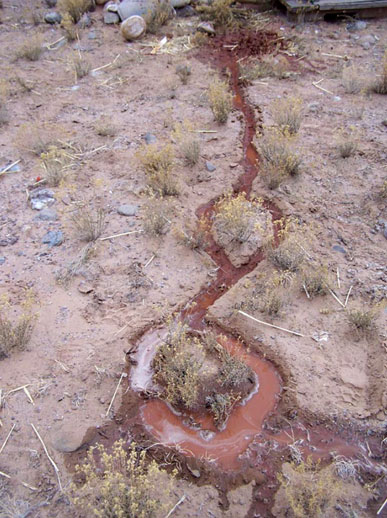2 Weeks
While staying on a mesa top in Northern New Mexico, a drawing was made every day for two weeks. Mixed from local clay — the same mud of which my house was built — the cumulative drawings became a calendar and a record of the place. After two weeks, the drawings were strung together and hung between the well house and the windmill, connecting wind, earth, and water.
Left to the elements, the intention was for them to eventually degrade back into the earth. After leaving the mesa, I received a package in the mail; a friend had found the drawings scattered around the desert and sent them with a note reading, “I couldn’t let them go.”



Mud Drawing
As a ditch is dug in the desert, it becomes a space to hold water.

Natural resources have always been a source of connection between people and place. Land embodies the stories of a place; it is the product of enduring seasons, specific communities, and unique histories. My practice uses site-as-material to form relationships between handwork and shared experience. This methodology is situated where art and agrarian systems meet, and aims to create ephemeral sensory encounters. I am intrigued by the life cycles of natural resources and often work with dirt as an exploration of the ephemeral. I work the soil with my hands and with the hands of others, in various conditions, to better understand these materials and the meaning of certain sites. As an earth worker, my artwork is informed by the field; likewise, fieldwork is my creative practice.
My relationship to land as both source and resource developed in rural New Mexican communities over an eight-year period. When I moved to northern New Mexico, I was responsible for caring for an apple orchard. I was an outsider and a woman. I learned the specifics of flood irrigation and local agriculture, as well as the water politics of my small village. Water, land, and family are resources that nurture many New Mexicans’ sense of place. My stewardship for the orchard became an extension of my studio practice and allowed me to cultivate relationships in the community, which in turn helped me gain a deeper understanding of its history and agricultural practices. Slowly, through close observation and story-swapping, my dialogues with the older generation enabled handshake leases of farmland, and further informed my emergent social practice.
As an extension of my commitment to exploring place, my work soon embraced land reclamation projects, native seed-saving initiatives, farm- and art-education programs, and food production more generally. I considered the everyday tasks of land-based living as active modes of place-making. I created opportunities to experience the natural world through physical labor, through slowness, and through the senses, reviving a reciprocity between land and my community. Living and working became art, and the art became a distillation of my specific place. Land-based practices and agricultural calendars both respond to cycles of creation and decomposition into the soil.
•••
From 2008-2015, Alexis co-operated Jubilee Farm in Chimayo, a rural village in Northern New Mexico. There she maintained a studio in the oldest plaza in the US, a historic building made from adobe bricks. Alexis earned a BFA from the School of the Art Institute of Chicago, and has shown her work both nationally and internationally, in such places as Kochi-Muziris Biennale, Kochi, India; 5 x 5, Washington, DC; and Kingston Sculpture Biennale, Kingston, NY. She has received awards from Joan Mitchell Foundation, Santa Fe Art Institute, and NYFA, among others. Alexis grew up in the Hudson Valley, NY, where she now lives.
